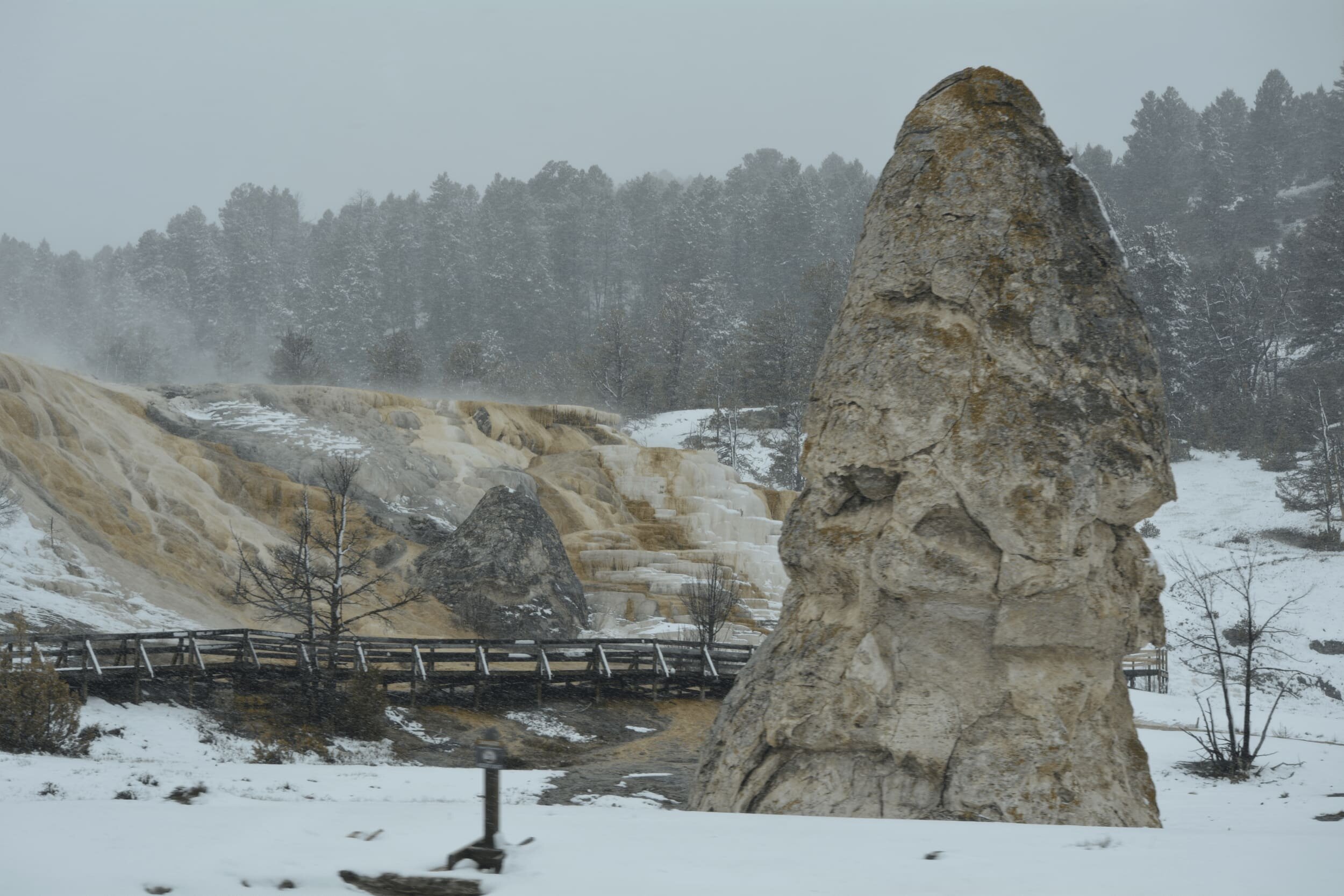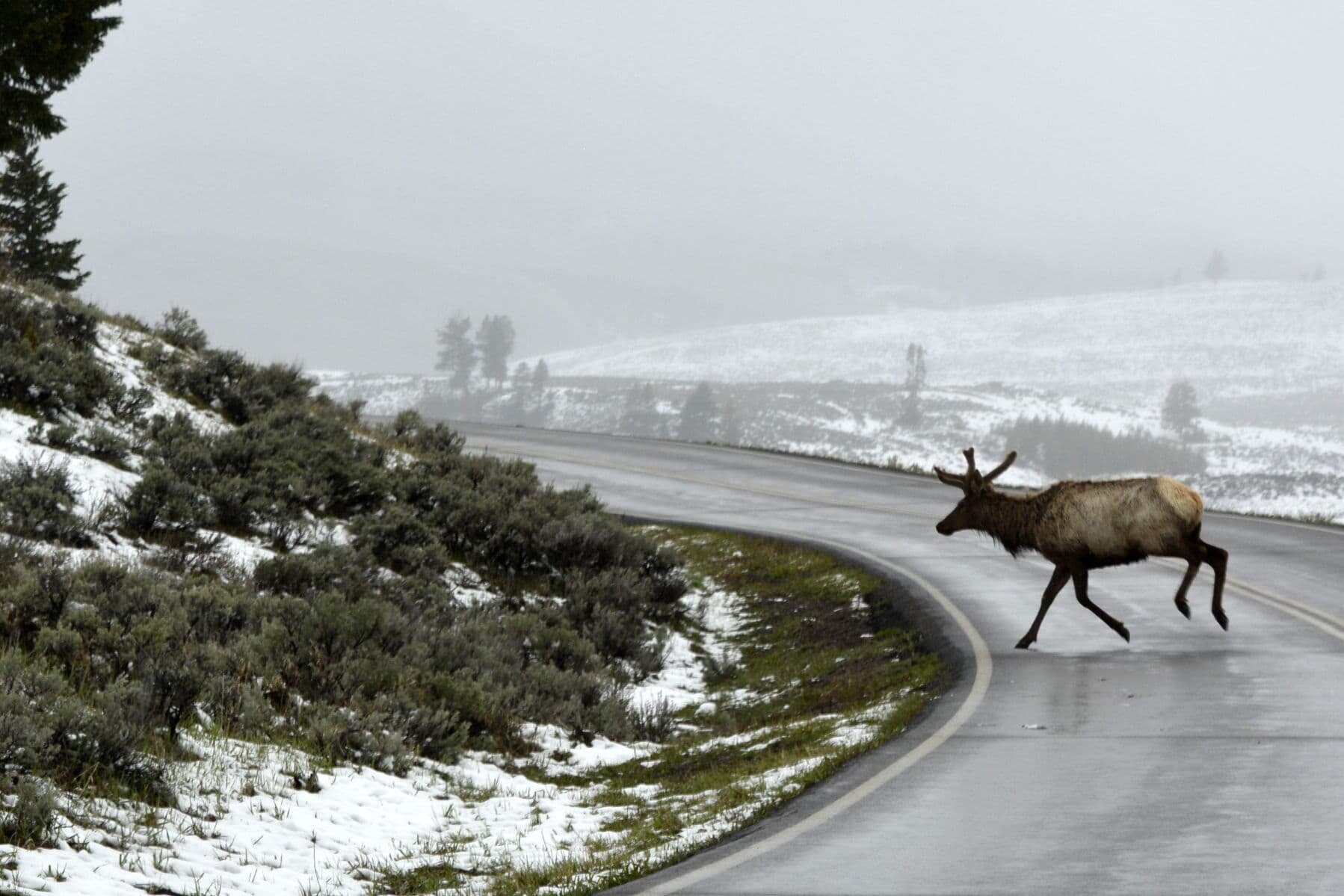How to do Yellowstone Right
Since moving to Montana almost a decade ago, our family has been to Yellowstone National Park many times. Each time we go, we learn how to make the trip a little bit better for the next visit. I'm sharing with you the things we've learned over the years, so when you come visit, you'll know how to do Yellowstone the right way. Read to the end for the most important tip.
This post contains affiliate links.
First up, don't forget that Yellowstone is not a zoo. It is a legitimate wilderness with wild animals.
As such, be smart and DO NOT APPROACH THE ANIMALS.
The things you'll need to consider include timing, transportation, lodging, food, and what to pack. I'll give suggestions for each of these below.
Stone arch gate entrance into Yellowstone National Park
Time: How much and when?
There is so much to see in this park, you really need to give yourself time to see it. Really see it. Like get out of the car/shuttle and walk into that wilderness (where allowed).
I would recommend a visit of a minimum of two and a half days. Give yourself that half day on your arrival day just to drive in from the airport or set up camp and get situated. Become familiar with your map and how to use bear spray, etc. Maybe see a little bit of the park that's closest to you, especially in the evening when a lot of animals are out. Then rest up, and get ready to start your tour early the next morning.
The time of year you choose to visit depends on what's most important to you.
Spring (April/May) is good for seeing baby animals with less traffic, but there's still a good chance of snow. Some services/tours may not be open yet.
Summer (June-August) offers beautiful weather and a fully operational park, but high traffic volume.
Fall (September/October) usually means smaller crowds, but snow becomes likely again. Plus the bears are hungrier.
We have visited the park in each season, and I just can't decide which is my favorite.
Transportation
Your best option when visiting Yellowstone is to have a car. This gives you so much freedom of choice. It will also help you get around outside the park, if you're not staying at a lodge inside the park.
But if you don't want to deal with the hassle of a car, there are many bus tours available that will pick you up from your hotel or campsite. Remember to book in advance.
Lodging: There are various options.
You can camp in and around Yellowstone. There are hotel accommodations inside the park (if they're not closed due to the pandemic). There are small hotels and motels in each of the small towns at the entrances of the park (Gardiner, West Yellowstone, and Cooke City in Montana and Cody and Jackson in Wyoming.) The vast majority of these options book up early, so plan your trip far in advance. The Yellowstone National Park website is very useful when trying to decide which entrance you'll use as your "home base." Also be sure to check out Under Canvas for a great glamping option.
If you're visiting the park for the first (and possibly only) time, you definitely want to spend two full days in the park (minimum). You could try to do it in a day and a half, but that half day would feel really rushed. On the map, it doesn't look like THAT much land to cover (though it is significant). But keep in mind, your driving will be slow due to speed limits, traffic, and those pesky bison always blocking the road.
Mammoth Hot Springs in Yellowstone National Park
You'll probably want to see the most famous sites like Old Faithful and Mammoth Hot Springs. These are on opposite ends of the park. Consider doing the northern loop (Mammoth) on one day, and the southern loop (Old faithful) on a different day.
Food: There are limited options inside the park.
Canyon Village, Grant Village, and Old Faithful are good places to grab a bite to eat. Our recommendation is to visit Old Faithful around lunch time. We watch the geyser erupt, eat lunch, use the facilities, get an ice cream, and gas up all in one stop. Visit the park's website for more information on which restaurants are currently open.
There are also lots of little restaurants in the towns just outside the park. Gardiner and West Yellowstone are the closest.
Another good option is to pack a lunch and have a picnic at one of the sites inside the park. Just remember, THIS IS BEAR COUNTRY. Bears are attracted to human food, so keep your trash locked up.
Old Faithful geyser erupting in Yellowstone National Park
The sights: Don't miss these ones.
Old Faithful
Mammoth Hot Springs
Grand Prismatic
Artist's Paintpots
Lamar Valley
Seeing Animals: Things to consider
Remember, this is wilderness. DO NOT APPROACH the animals.
If you want to see baby animals, visit Yellowstone in the spring. Early May would be perfect for this. (Just remember that May can still be cold in Montana...it can also be perfect weather too...you just don't know.)
The best time of day to see animals is around dawn and dusk. The roads and sight-seeing pullouts will be less crowded then too, so if you can work that timing into your tour, you won't regret it. Have the camera ready.
The best place to see animals is Lamar Valley. Look at the map (the attendants will give you one as you enter the gates) and plan your route ideally to end up in Lamar Valley in the evening.
Elk crossing road in Yellowstone National Park (early May)
Pets: what to know
Even though Yellowstone is an outdoor area, there are some strict regulations on where pets are allowed. See the website for the full regulations, but the gist is:
pets are allowed at campsites and near roadway stops
pets must be on leash at all times
pets may not be left alone
pets may not be taken on hikes in the backcountry
pets are not permitted on the boardwalks leading to the sights (even on leash).
coyote in Yellowstone National Park
Things to pack:
This post contains Amazon affiliate links. If you purchase through one of the links, I make a small commission at no extra cost to you.
Good walking shoes - some of the paths leading to the geothermal features are wooden boardwalks, some are hard-packed dirt or loose gravel. Expect mountainous terrain if hiking in the backcountry.
A good camera with zoom lens - This is tricky because you want a large zoom lens for capturing animals in the distance such as bears, wolves, and eagles. But you also want high-quality pictures of the geothermal features that you will see close up. So ideally, you'll bring two lenses. When we don't feel like fussing with multiple lenses, we use this one. We get great pictures with it (though I'm sure a real photographer would scoff at them.
Sun protection - When you're this far north, the sun is intense. Shade makes all the difference. Most of the walking and sight-seeing you'll be doing will be in direct sun, so protect yourself with sunscreen and hats.
Water & snacks - Being stuck in long lines of traffic is the worst especially if you're dealing with kids who are hungry or thirsty. Have refreshments on hand to make the sightseeing more pleasant. Just remember not to feed any wild animals and to dispense of your trash in the bear-proof containers throughout the park.
Layers - It is not at all uncommon for the weather to change dramatically from one minute to the next. I've learned to keep a light long-sleeve shirt (preferably one with UPF) on hand at all times.
Binoculars - These are a must in my opinion. Yes, you're likely to see bison and elk pretty close up. But if you get a chance to see a bear at all, it will likely be a spec in the distance. We always bring this large waterproof pair.
GPS - this is only for the hardcore hiker or someone visiting the park outside of peak season. Since there is no cell service in much of the area within and surrounding Yellowstone, you'll need an alternative way to call for help should you get stranded or injured. We've been having a lot of fun with this Garmin. We recently took it sailing on Yellowstone Lake.
Yellowstone Lake with snow covered mountain in the background in Yellowstone National Park
Additional Tips
Pack your patience. Everyone else wants to take their time and see the sights too. Once you actually find a parking spot and get out to walk, the crowds aren't so bad. The lines of people move along pretty quickly. But driving around the park can be a slow-going process. Use that slow pace as a time to look for animals. Keep your binoculars and cameras ready.
Don't count on your cell phone. If you're traveling with another group, decide on meet-up points and times in advance or you may never reconnect throughout the day. A large portion of the park has no cell service, so you will likely not be able to contact friends once you're away from the main visitor areas. (And if you're hiking or fishing alone in the backcountry consider the GPS I linked to above.)
Don't collect wildflowers or rocks. Just take pictures of them. There's a little paragraph in tiny print on the handout the rangers give you as you enter the park. A lot of people are too busy taking in the sights to read all that fine print, so they don't know it's illegal to pick flowers or collect rocks within the park.
If you plan on boating on Yellowstone Lake, check the weather first. Storms whip up often over that lake (even when the rest of the park just seems cloudy). The water there is quite frigid as it's fed by snowmelt, so you don't want to end up in a capsized boat situation.
Do the Junior Ranger program. A great way to get more out of your visit and make it a lasting memory is by getting your kids more involved in what is happening ecologically in this amazing place.
Most Important: Don't try to take a selfie with a bison.
Close up picture of bison in Yellowstone National Park
There have been NUMEROUS occasions of people thinking bison were docile and would allow them to get close enough to either pet or pose with for a picture. Most of these people were either gored or trampled. Don't try it. If you see a bison huffing, shaking its head, or pawing at the ground, get out of its way. This means it is agitated and about to charge.
And now you know the most important things about visiting one of the greatest natural wonders of the world, Yellowstone National Park. Put these tips to use and you and your family are guaranteed to have memories that will last a lifetime.
Save this page so it's easy to find later.
The image below is pinnable. Thanks
Safe Travels!
Tiffiny













